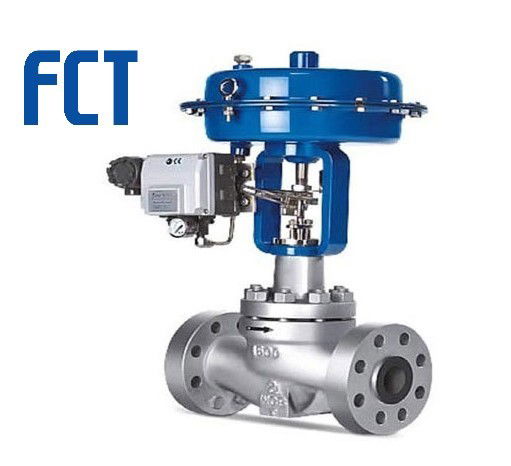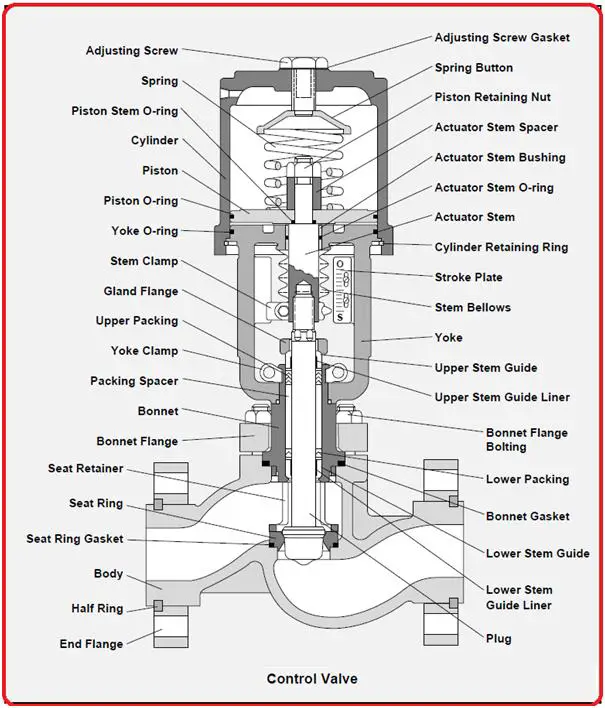Recognizing the Significance of Control Valves in Process Automation
Recognizing the Significance of Control Valves in Process Automation
Blog Article

Maximize Power Cost Savings and Comfort With Advanced Structure Automation Controls
In the world of contemporary design and facility management, the combination of sophisticated structure automation controls stands as a critical development. By using the power of automation, buildings can adapt, react, and develop in ways that were once unthinkable.
Power Efficiency Benefits
Energy effectiveness advantages can substantially minimize energy usage and functional costs in buildings. By executing energy-efficient practices and technologies, building owners and operators can attain substantial financial savings while additionally adding to environmental sustainability. One of the primary benefits of boosting power efficiency in buildings is the decrease of utility bills. Energy-efficient systems, such as innovative structure automation controls, can enhance the use of sources like home heating, illumination, and cooling, bring about reduced energy expenses gradually.
Furthermore, improved power efficiency can prolong the lifespan of structure devices and systems. By running a lot more efficiently, cooling and heating systems, lighting fixture, and other structure elements experience much less damage, causing decreased upkeep and replacement prices. Furthermore, energy-efficient structures often regulate greater home values and rental rates, offering lasting financial benefits to owners.
In addition, energy performance can boost occupant convenience and productivity. Correctly managed interior atmospheres with optimal illumination and thermal problems produce a more enjoyable and favorable work space, leading to enhanced worker fulfillment and performance. Overall, the energy performance benefits related to innovative building automation controls are multifaceted, including price savings, environmental stewardship, and owner well-being.
Improved Convenience Control
Enhancing comfort control in structure environments calls for an innovative integration of advanced automation systems for ideal passenger health. By utilizing sophisticated structure automation controls, facilities can tailor the interior atmosphere to fulfill the details needs and choices of residents. These systems enable exact guideline of temperature, air flow, and lighting, producing a comfortable and effective ambience. Passenger complete satisfaction and productivity are closely connected to thermal comfort, making it important to have systems in position that can adjust to changing conditions in real-time.
Enhanced comfort control surpasses basic temperature level adjustments. It consists of attributes such as personalized setups, occupancy sensing units, and all-natural light use to create a receptive and vibrant atmosphere. By incorporating these advanced controls, structures can not just enhance convenience however additionally boost power performance by enhancing system procedures based upon real tenancy and usage patterns. Eventually, focusing on owner convenience through innovative automation systems results in an extra pleasurable and much healthier interior setting.
Functional Effectiveness Improvements

Moreover, the implementation of real-time surveillance and analytics tools makes it possible for building operators to recognize energy inefficiencies and operational abnormalities promptly. By continuously keeping track of energy usage patterns and system efficiency metrics, adjustments can be made in real-time to maximize power intake and guarantee peak operational effectiveness. control valves. Additionally, incorporating need feedback approaches right into structure automation controls can further enhance operational performance by dynamically adjusting energy use based upon grid conditions and prices signals
Indoor Environment Optimization
Effective interior environment optimization is an essential aspect of building automation controls, making sure residents' comfort and wellness while making the most of energy savings. By making use of sophisticated sensing units and controls, building automation systems can continuously check and change temperature level, moisture degrees, air top quality, and ventilation to develop an optimal interior atmosphere. Preserving consistent and comfortable conditions not just enhances owner contentment however likewise improves productivity and general health.
Interior climate optimization additionally plays a critical role in power performance. By fine-tuning cooling, home heating, and air flow systems based on real-time information and tenancy patterns, developing automation controls can substantially decrease energy intake - control valves. For circumstances, carrying out methods such as demand-controlled ventilation and thermal zoning can help decrease energy waste while guaranteeing that each published here area of the structure gets the necessary conditioning.

Sustainable Environment Production
Structure automation manages not only optimize interior climate conditions for energy efficiency and passenger comfort however also lay the foundation for developing a sustainable setting through critical management of resources and systems. By integrating innovative building automation modern technologies, such as sensing units, actuators, and smart software program, facilities can adjust and keep an eye on power usage in real-time to lessen waste and lower their carbon footprint. These systems allow anticipating upkeep, identifying prospective concerns before they escalate and enhancing tools efficiency to enhance durability and performance.
Additionally, lasting atmosphere creation prolongs past power administration to incorporate water preservation, waste reduction, and indoor air quality enhancement. Building automation controls can control water use, detect leaks, and guarantee appropriate garbage disposal methods, adding to total sustainability initiatives. In addition, by keeping track of and managing air flow and filtering systems, these innovations improve passenger health and wellness and efficiency while reducing energy consumption related look here to HVAC operations.
Verdict
In verdict, progressed building automation manages offer significant advantages in regards to energy savings, comfort control, functional performance, interior environment optimization, and producing a sustainable setting. By applying these controls, structures can attain optimum efficiency while lowering power consumption and improving owner convenience. It appears that making use of innovative automation modern technology is vital in boosting building efficiency and producing a more lasting future.
Energy efficiency benefits can considerably reduce power usage and functional prices in buildings. Overall, the energy effectiveness advantages connected with sophisticated building automation controls are complex, encompassing price savings, ecological stewardship, and occupant wellness.
Furthermore, integrating need feedback approaches into building automation controls can further improve operational effectiveness by dynamically readjusting power use based on grid conditions and pricing signals.
Structure automation regulates not just enhance indoor environment problems for power performance and occupant convenience but likewise lay the structure for creating a sustainable setting with critical management of resources and systems.In final thought, progressed building automation controls deal substantial advantages in terms of power financial savings, comfort control, functional effectiveness, indoor environment optimization, and developing linked here a lasting environment.
Report this page